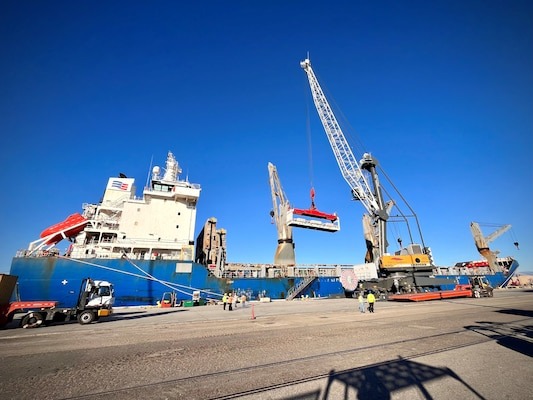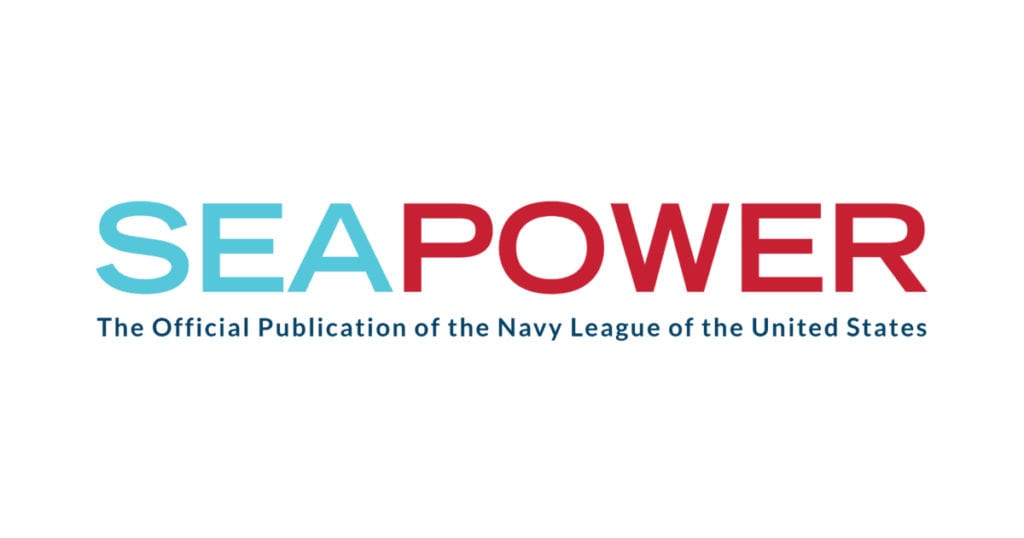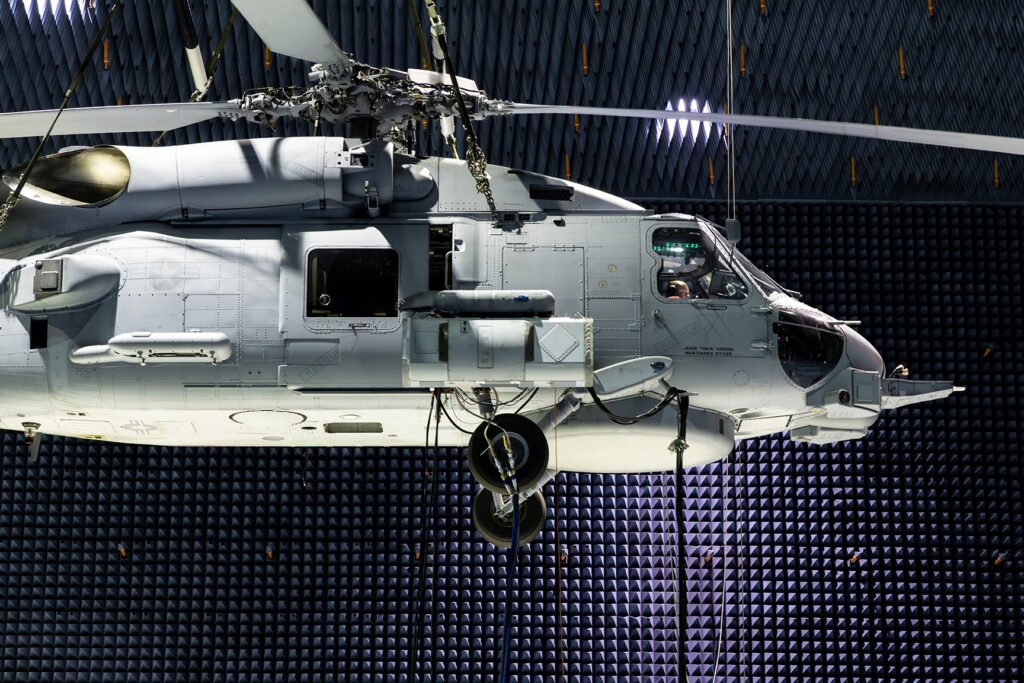MSC Reservists Support Operation Deep Freeze 2024 Loadout

*****
MSC Reservists Support Operation Deep Freeze 2024 Loadout
From Sarah Cannon, Military Sealift Command Pacific
UNITED STATES — Navy reservists from Military Sealift Command Pacific’s Expeditionary Port Unit (EPU) 114 are conducting cargo operations in Port Hueneme, Calif., overseeing the loadout of supplies and equipment are being loaded onto the Military Sealift Command charter ship MV Ocean Gladiator in preparation for delivery to the remote Antarctica outpost of McMurdo Station, in support of the annual resupply mission; Operation Deep Freeze 2024.
Serving as liaisons between the Navy and the crew of the ship and the stevedores on the pier, the EPU 114 reservists are coordinating the loadout of 407 pieces of cargo, consisting of containers filled with mechanical parts, vehicles, construction materials, office supplies and electronics equipment, and mobile office unites; supplies needed for the year’s survival at McMurdo Station, Antarctica.
According to Cmdr. Timothy Cushanick, EPU 114’s commanding officer, the moral among the six-member reserve team is high, something he attributes to the mission itself, and to the fact that this year’s mission will be completed before Christmas, unlike past years when it was conducted during the holiday.
“Everybody is excited to support the mission, because it is so different than anything we normally do, but also because we will be home for the holidays!” he explained. “You can feel the excitement talking to the ship’s master and crew. They really want to be on this mission and to go to Antarctica. ODF is truly one a one of a kind thing for all of us, and we all feel privileged to be a part of it.”
Loading cargo into the 545-foot Ocean Gladiator requires advanced planning. Weight differences in cargo, as well as the types of cargo loaded and the storage issues require a specific load order, which is followed to the letter to ensure an on time departure. Because of this, the reservists have worked with members of the MSCPAC Operations team as well as Ocean Gladiator’s crew, port workers, stevedores and members of the National Science Foundation and Ports of America.
“This mission is supporting real-world operations, and not a table-top scenario type exercise like we as reservists normally do,” said Cushanick. “This is a fantastic opportunity for all of us, because we are working as a new team, with organizations we don’t normally work with. This mission is special, because of the length of it. Because it is nearly two weeks long, we are able to really get to know all the players, especially the ship’s crew, their capabilities and their needs. These are things we can take with us into other missions.”
Navy reservists are used to working in new environments with a team they have not met before, but that does not mean it is easy. Working as a new team can have its own set of challenges. To make the transition into the ODF mission easier, the EPU-114 team began communication through electronic means weeks ago, getting to know each other, and identifying strength of each member. While they had not worked as a team before reaching Port Hueneme, they did have a familiarization with each other.
“Working electronically before the mission set the stage for working together,” said Cushanick. “We might not know each other physically, but we did know each other’s names and a little bit of their personalities, which definitely makes the first couple of days easier.”
Ocean Gladiator will depart Port Hueneme later in the week. Following a stop in Christchurch, New Zealand, where the ship will load additional cargo, it will travel to the ice-pier at McMurdo Station, where members of Navy Cargo Handling Battalion ONE will conduct the offload. Before departing McMurdo station, Ocean Gladiator will be loaded with ice core samples that will be stored on the ship in sub-zero freezer containers. The ice core samples will be delivered to the United States for scientific study. In addition, retrograde cargo will be loaded onto the ship for transportation off the continent. These include trash and recyclable materials for disposal and equipment no longer required on the station.
Operation Deep Freeze is a joint service, on-going Defense Support to Civilian Authorities activity in support of the National Science Foundation (NSF), lead agency for the United States Antarctic Program. Mission support consists of active duty, Guard and Reserve personnel from the U.S. Air Force, Navy, Army, and Coast Guard as well as Department of Defense civilians and attached non-DOD civilians. ODF operates from two primary locations situated at Christchurch, New Zealand and McMurdo Station, Antarctica. An MSC-chartered cargo ship and tanker have made the challenging voyage to Antarctica every year since the station and its resupply mission were established in 1955.





